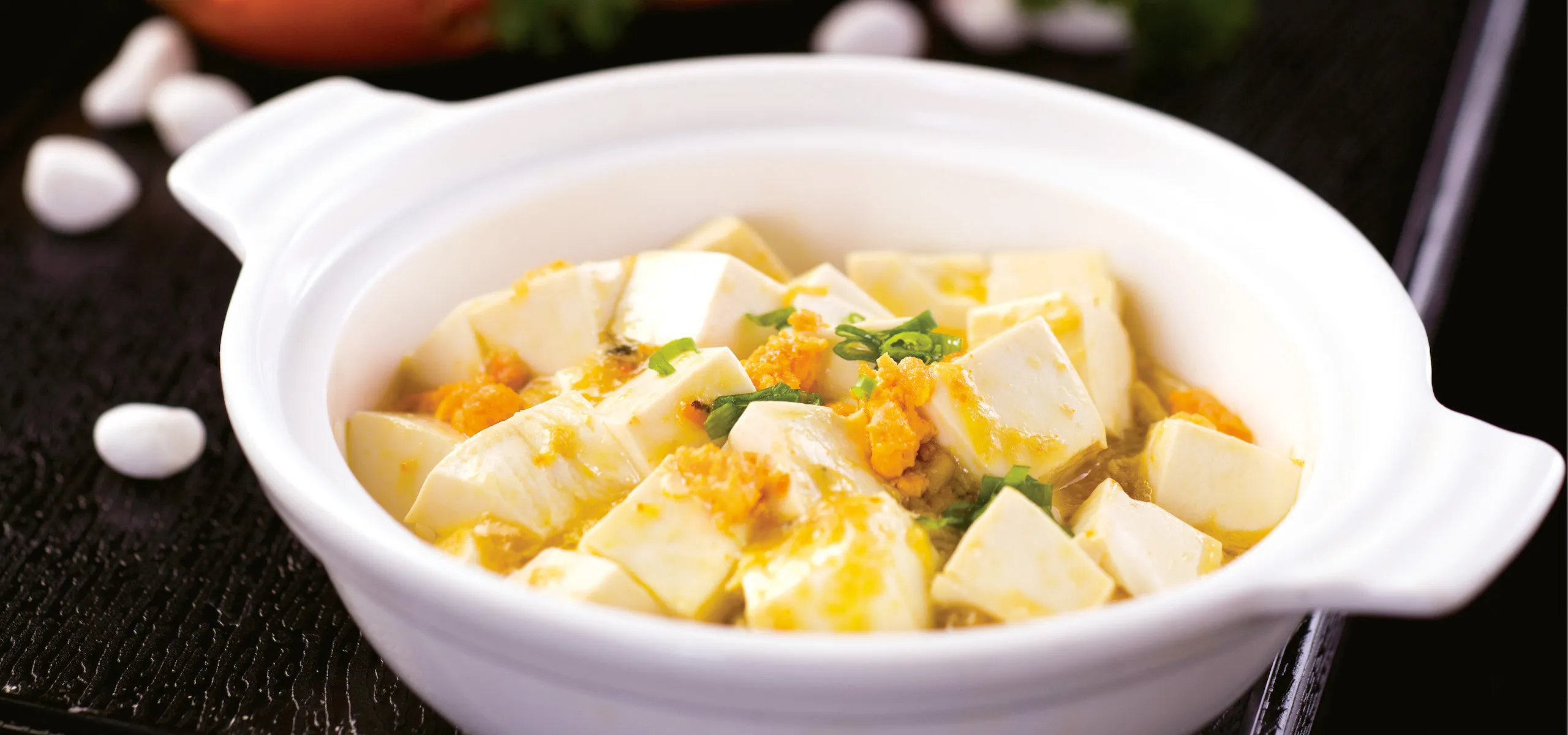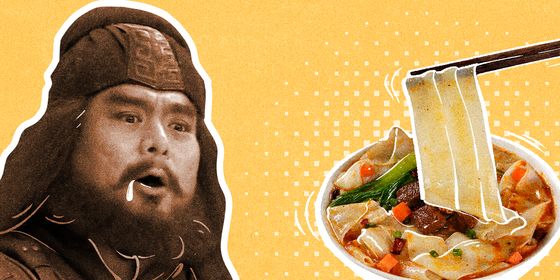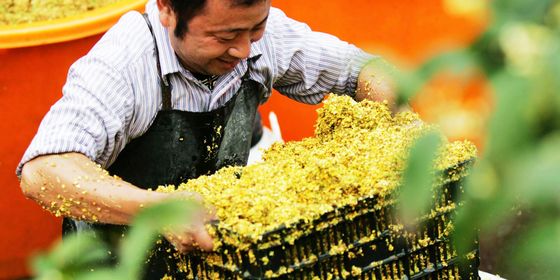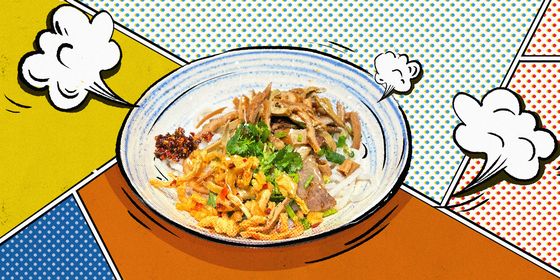This well-known summer dish serves up tofu swimming in a golden stew of crab roe—or is it egg yolk?
If ancient Chinese gastronomes had had social media, much of their time might have been consumed by sharing and commenting under gourmet pictures of crab. “Fresh, fat, sweet, and greasy, white as jade, and yellow as gold. Crabs have the best color, aroma, and flavor that nothing else can compete with,” scholar Li Yu (李渔) opined in the 17th century in his book Leisure Notes (《闲情偶寄》), where he described raising his own crabs in 49 vats in autumn and preserving them in yellow Shaoxing rice wine to be enjoyed for the rest of the year.
Over 1,000 years earlier, Emperor Yang of the Sui dynasty (581 – 618) rated the wine-soaked and honey-flavored crabs sent as tribute from Jiangdu (present-day Yangzhou, Jiangsu province) as his “Number One Food,” and would have them served to him with their shells wiped clean and wrapped in dragon-and-phoenix patterned gold foil. Even the contemporary Chinese food writer Cai Lan (蔡澜), born in Singapore in 1941, wrote in his essay “Ode to Crabs (《蟹颂》),” “It is not known who was the first person brave enough to try eating crabs, but they would be granted a Nobel prize if they had lived in modern times.”
Despite the popularity of crabs among emperors and literati, the golden orange crab roe seems to be more widely recognized today. Honored among today’s foodies as “ocean gold” for its oily flavor, grainy texture, and rich nutrients, crab roe inspired many dishes and desserts of Chinese cuisine, including crab roe tofu (蟹黄豆腐). This dish of unknown origin calls for cooking soft bean curd in a stew of crab roe.
“Ocean gold” doesn’t come cheap though. Due to the high cost and difficulty of extracting the roe, the vast majority of cooks replace crab roe with the yolk of duck eggs that have been preserved in salt brine. Salted egg is acclaimed for its own merits, but its golden yolk also resembles crab roe in color, texture, and taste. It is known for having a sharp, salty flavor and a firm, gelatinous texture. The yolks are also traditionally used for stuffing moon cakes and Chinese rice puddings, or zongzi (粽子).
In many parts of China, such as Zhejiang and Jiangsu provinces, salted eggs are traditionally consumed during the Dragon Boat Festival in the fifth lunar month, as it is believed to help people dispel moisture and toxins as spring turns to summer. Crab roe (or egg yolk) tofu is a signature dish of Beijing, Zhejiang, and Jiangsu cuisines, and the salted egg yolks from Gaoyou, Jiangsu, are especially commended for their reddish color and rich oil.
This well-known summer dish serves up tofu swimming in a golden stew of crab roe—or is it egg yolk?
Steps:
- Wash and cut the tofu into small cubes, and chop the chives
- Cook the tofu cubes in 600ml of boiled water with 1g of salt for 1 minute, and then drain
- Mash the salted egg yolk
- Pour the cooking oil into a wok and fry the mashed egg yolk over low to medium heat until it bubbles
- Add the tofu cubes to the wok and mix them evenly with the yolk
- Add the starched water and the remaining 2g of salt and fry for 2 minutes
- Sprinkle with chives and serve
Images from VCG
This is a story from our issue, “Something Old, Something New.” To read the entire issue, become a subscriber and receive the full magazine. Alternatively, you can purchase the digital version from the iTunes Store.
How to Make Salty and Delicious Crab Roe Tofu is a story from our issue, “Something Old Something New.” To read the entire issue, become a subscriber and receive the full magazine.














